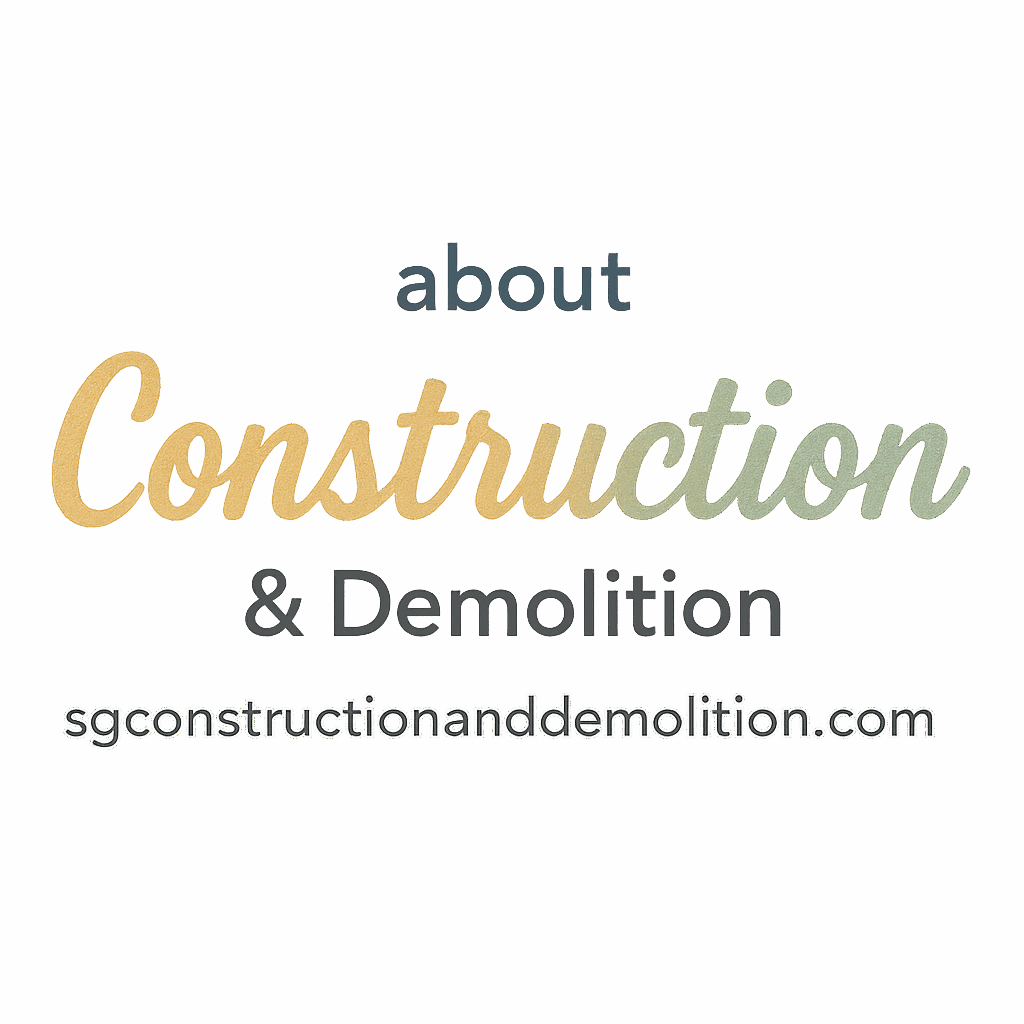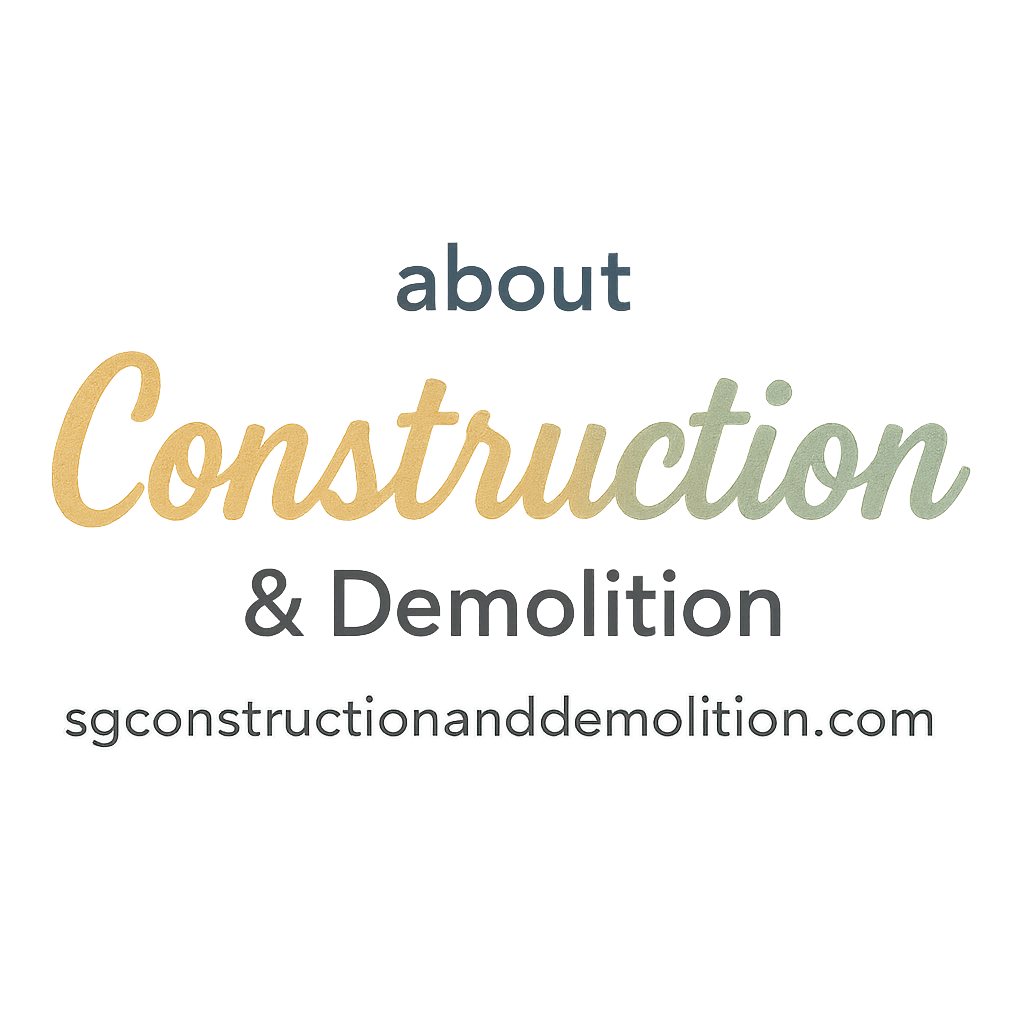Introduction
Eco-friendly construction projects are becoming more than just a trend—they’re a necessity. As the world leans into sustainability, green building practices are popping up everywhere. But let’s be honest—just because something is labeled “eco-friendly” doesn’t mean it truly is. That’s where many well-intentioned builders go wrong.
In this article, we’re going to cover the six biggest mistakes you should absolutely avoid when planning and executing eco-friendly construction projects. Whether you’re a seasoned contractor or a newbie starting out, these insights will help you build smarter, greener, and cleaner.
And hey, if you’re into diving deeper, check out SG Construction & Demolition for even more sustainable building resources.
Mistake #1: Skipping the Planning Phase
Why Planning is Crucial
Let’s kick it off with the most common (and costly) mistake—rushing into a project without a solid green plan.
Planning is where your entire sustainability effort begins. Without a strategy, you’re basically shooting in the dark, which leads to overspending, wasted materials, and inefficient designs.
Link to Safety and Efficiency
You wouldn’t go skydiving without checking your parachute, right? The same goes for building. Proper planning is directly tied to safety, energy efficiency, and long-term savings. If you’re new to construction, check out our Construction Basics Guide for a strong foundation.
You should also factor in Safety Planning at this stage—it’s not just about compliance, it’s about protecting people and the planet.
Mistake #2: Choosing the Wrong Materials
Understanding Sustainable vs. “Greenwashed” Products
Just because a product claims to be “eco-friendly” doesn’t make it so. There’s a lot of greenwashing going on out there—manufacturers slapping a “green” label on products without real sustainability.
What you want are genuinely sustainable materials: locally sourced wood, recycled steel, low-VOC paints, bamboo, cork, and concrete alternatives like hempcrete.
Resources for Better Material Selection
Browse through our curated tools and equipment section to find suppliers and insights on verified sustainable materials.
Also explore articles under our equipment and innovation tags to stay up to date with what’s working in the green building world.
Mistake #3: Ignoring Local Climate and Site Conditions
Why One-Size-Fits-All Doesn’t Work
A solar roof may sound amazing—until you realize your project’s location only gets three hours of sun in winter. Designing for sustainability means working with your environment, not against it.
Every climate zone has different demands—whether it’s insulation, airflow, water management, or material resilience.
Smart Design, Smart Environment
Consider this: positioning your windows to maximize natural light and heat can cut down your energy use significantly. These small tweaks come from understanding your site orientation, wind patterns, and weather behaviors.
Green doesn’t mean guessing—it means strategic thinking.
Mistake #4: Neglecting Energy Efficiency Systems
Solar, Insulation, and Smart Tech Integration
Here’s a big one. A lot of people throw in a few LED bulbs and call it “green.” But real energy efficiency involves:
- Proper insulation (goodbye heat leaks!)
- Smart thermostats and energy monitors
- Efficient HVAC systems
- Solar panels and battery backups
- Low-energy lighting and appliances
Think of your home or building as a living, breathing organism—it needs a smart metabolism!
Explore how smart tech trends are revolutionizing energy use in construction.

Long-Term Cost vs. Short-Term Savings
Yes, some of these systems have upfront costs. But the long-term energy savings will make your wallet smile. And let’s not forget the potential for government incentives or tax credits.
Mistake #5: Not Working with the Right Professionals
Who Should Be On Your Team?
If your architect or builder doesn’t understand eco-conscious design, you’re going to have a rough ride. You need a team that includes:
- Green-certified architects
- Sustainable engineers
- Energy consultants
- Contractors experienced in green building
Vetting for Sustainability Knowledge
Ask your potential team:
- What green certifications do they have?
- Have they completed eco-friendly construction projects before?
- Are they familiar with innovative techniques?
Bringing in the right crew is half the battle—and makes avoiding the rest of these mistakes much easier.
Mistake #6: Overlooking Waste Management
Construction Waste: The Hidden Culprit
Did you know that construction and demolition generate over 600 million tons of waste in the U.S. each year?
If your project isn’t actively reducing waste, it’s contributing to the problem.
Demolition with a Green Mindset
Whether you’re tearing down or renovating, consider deconstruction over demolition. It lets you salvage and reuse materials like wood, metal, and fixtures.
Our Demolition Techniques Guide has strategies for handling this part of your project more sustainably.
Also browse our demolition and misconceptions tags to avoid common blunders.
Bonus Tips for Eco-Friendly Construction Projects
Embrace Tech and Innovation
Today’s eco-construction is smarter than ever. From energy modeling software to drone surveying, you can integrate smart tech in almost every phase of the build.
Educate Your Crew
Don’t assume your contractors know all the green practices. Train your team on proper waste disposal, energy use, and the reasoning behind sustainable choices.
Need a breakdown of steps? Our project management and steps sections are gold mines.
Conclusion
Going green in construction is no longer a luxury—it’s a responsibility. But it doesn’t have to be complicated. By avoiding these six common mistakes, you’re already ahead of the game. Remember, eco-friendly construction projects are as much about mindset as they are about materials.
Plan well, think smart, and build something that lasts—not just structurally, but environmentally. 🌱
To keep learning, visit SG Construction & Demolition and explore our categories on beginners, trends, and more.
FAQs
1. What makes a construction project truly eco-friendly?
It’s about reducing environmental impact across the board—materials, energy, waste, and design. A truly eco-friendly project is planned with sustainability from the ground up.
2. Are eco-friendly materials more expensive?
Initially, they can be. But over time, they reduce costs through energy savings, durability, and even tax incentives.
3. Can I make a traditional building more sustainable later?
Absolutely! Retrofitting with better insulation, smart tech, and solar power can drastically improve a building’s eco-score.
4. What’s the difference between green building and greenwashing?
Green building is backed by real practices and results. Greenwashing is marketing fluff without substance. Always research materials and claims.
5. How do I manage construction waste more sustainably?
Focus on recycling, reusing, and working with contractors who follow green disposal methods. Learn more from our waste-smart demolition tips.
6. Do I need a special certification to do eco-friendly builds?
Not necessarily, but certifications like LEED or Green Building Council recognition add credibility and often improve ROI.
7. Where can I find eco-friendly tools and tech?
Right here: visit our tools and equipment page for vetted resources and product suggestions.


